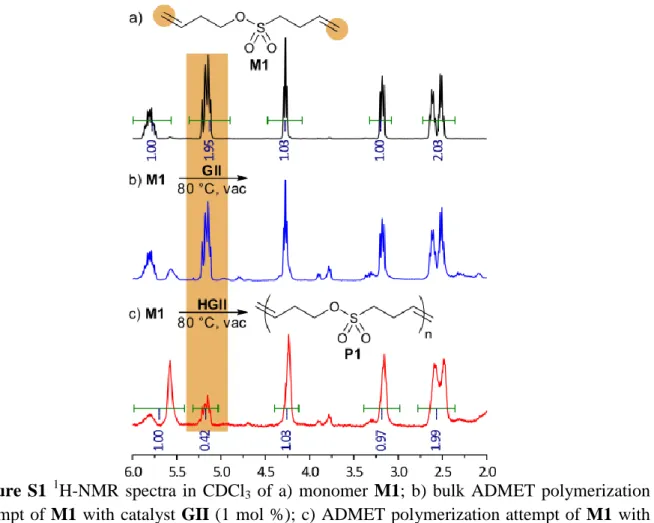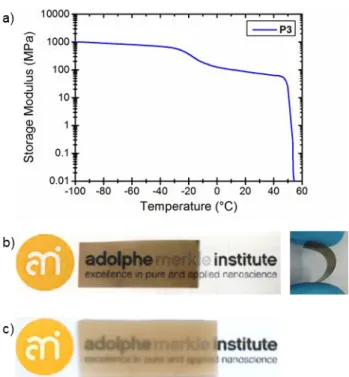Supporting Information
Synthesis of poly(sulfonate ester)s by ADMET polymerization
Rebecca R. Parkhurst, Sandor Balog, Christoph Weder, Yoan C. Simon*Adolphe Merkle Institute, University of Fribourg, Rte de l’Ancienne Papeterie CP209, CH-1723 Marly 1, Switzerland yoan.simon@unifr.ch Table of Contents Supplemental Figures S2 Scheme S1 S2 Figure S1 S2 Figure S2 S3 Figure S3 S3 NMR Spectra S4 Spectrum S1/S2 Compound 2 S4 Spectrum S3/S4 Monomer M2 S5 Spectrum S5/S6 Compound 3 S6 Spectrum S7/S8 Polymer P2 S7 Spectrum S9/S10 Monomer M3 S8 Spectrum S11/S12 Polymer P3 S9 Spectrum S13/S14 Polymer HP3 S10 References S11
S2
Scheme S1 Two possible degradation pathways of sulfonate esters.1,2
Figure S1 1H-NMR spectra in CDCl3 of a) monomer M1; b) bulk ADMET polymerization
attempt of M1 with catalyst GII (1 mol %); c) ADMET polymerization attempt of M1 with catalyst HGII (1 mol %), for which end-group analysis resulted in n = 5 or Mn = 800 g/mol.
S3
Figure S2 a) Representative DMTA trace of films of P3 cast from PhCH3 solution.
Experiments were performed at a heating rate of 3 °C/min under N2. b) Pictures of a solution
cast film of P3 (PhCH3, 30 °C), and c) a melt-processed film of HP3. Films of HP3 are
visibly more opaque.
S11
References
1. E. J. Corey, G. H. Posner, R. F. Atkinson, A. K. Wingard, D. J. Halloran, D. M. Radzik and J. J. Nash, J. Org. Chem., 1989, 54, 389-393.

